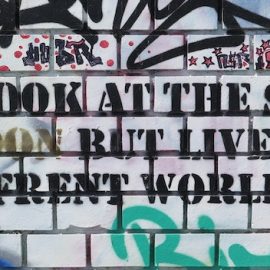
This is a free excerpt from one of Shortform’s Articles. We give you all the important information you need to know about current events and more.
Don't miss out on the whole story. Sign up for a free trial here .
What are the pros and cons of adopting new banking rules in the U.S.? Do we need stronger banking regulations?
Banking regulations are a hotly debated topic in the U.S. currently, with some arguing that they provide essential consumer protections and others contending that they stifle competition and innovation. Now, with the collapse of Silicon Valley Bank, there’s an even greater push for new banking rules.
Read on to learn about the debate over new U.S. banking rules, based on various experts’ perspectives.
Debate: New Banking Rules or Less Regulation?
Experts say that the 2018 partial repeal of the Dodd-Frank law—which had imposed new banking rules to ensure that banks engaged in safer lending and investing practices—played a key role in the recent collapse of Silicon Valley Bank (SVB) and destabilization of the banking sector.
Though the government’s response to SVB’s collapse appears to have prevented a full-blown crisis, the stability of the banking sector and the path forward remain unclear. Some fear that more banks remain highly vulnerable—putting the entire system at risk.
Background
Between 2017 and 2018, the banking lobby spent more than $400 million to dismantle the 2010 Dodd-Frank Act, which imposed new and greater banking rules on lenders and banks to protect consumers and prevent a repeat of the 2008 financial crisis. Working both sides of the aisle, lobbyists framed the 2018 Economic Growth, Regulatory Relief, and Consumer Protection Act—which ultimately rolled back some Dodd-Frank regulations—as a chance to remove unnecessary oversight rules that created a fiscal burden for community banks serving farmers and small businesses.
The 2018 rollback bill also proposed designating midsize banks as “too big to fail,” a recategorization that would exempt them from strict oversight protocols like financial stress testing—a move some believe contributed to SVB and Signature Bank’s recent collapse and made a broader banking crisis imminent.
Support for Bank Regulation
Experts who support new banking rules say the Federal Reserve—which supervises financial institutions to ensure their regulation compliance and safe operation—fell down on the job and must be held accountable. They argue that former President Trump ran on the promise of deregulating banks, and that Federal Reserve Bank chair, Jerome Powell, has spent years weakening Dodd-Frank regulations.
They also contend that the Fed destabilized the banking sector by repeatedly increasing interest rates to counter skyrocketing inflation, which contributed to SVB’s downfall. Such critics say that given the disastrous consequences of rate hikes in American history, the central bank should have paid more attention to interest rate risk (the impact of interest rate increases on banks’ financial condition).
Recommendations that experts offer to strengthen the banking industry include:
- Regulators should pay closer attention to smaller and midsize banks. In isolation, the collapse of one midsize bank isn’t necessarily a problem. But failure of a group of midsize banks could damage the broader economic system—a fact made plain by fallout from SVB and Signature Bank’s recent collapse.
- Bring back greater regulation of midsize banks—including stress tests—to ensure their health and stability.
- Raise or remove the Federal Deposit Insurance Corporation (FDIC) $250,000 insurance cap. The FDIC should guarantee greater or full restoration of customers’ money in the event of a bank collapse to prevent a bank run. This would give customers confidence that if their bank hits a rough patch their money is safe, decreasing the chance that they’ll panic and try to pull their funds.
- Strengthen penalties against failed banks and their executives: Claw back executives’ salaries and bonuses, ban those whose institutions collapse from the banking industry, and increase regulators’ ability to fine them.
Support for Less Bank Regulation
However, not everyone agrees that more regulation will prevent future problems. Experts who oppose new banking rules argue that:
- 2018 legislation easing Dodd-Frank regulations was a necessary course corrector. Years of unnecessary, burdensome compliance costs weakened small and midsize banks’ ability to compete and survive and led to bank consolidations and the proliferation of mega banks—the opposite of what Dodd-Frank intended.
- Focus should turn from Dodd-Frank to the Fed’s failed supervision efforts. The 2018 law didn’t prevent the central bank from increasing supervisory levels at the regional bank level, raising the question of why supervision that SVB did receive didn’t prevent its collapse.
- The Fed is responsible for price stability and low unemployment—not financial regulation, which is the purview of the Comptroller of the Currency and the FDIC Treasury.
- Raising or removing the FDIC’s $250,000 cap will encourage risk-taking behavior and bail out bad actors, leaving a mess for rule followers to clean up.

Want to fast-track your learning? With Shortform, you’ll gain insights you won't find anywhere else .
Here's what you’ll get when you sign up for Shortform :
- Complicated ideas explained in simple and concise ways
- Smart analysis that connects what you’re reading to other key concepts
- Writing with zero fluff because we know how important your time is






